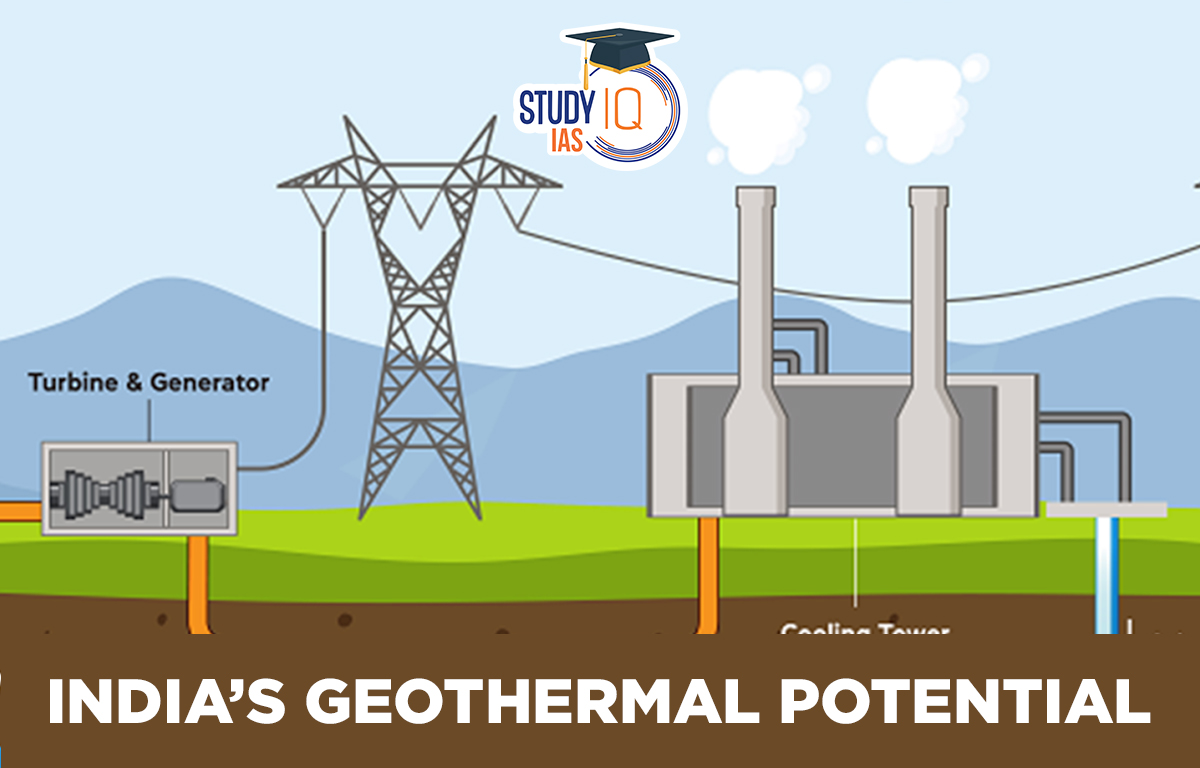Table of Contents
In News: ONGC is planning to map the geothermal energy sources of India in search of clean energy.
More on India’s Geothermal Potential
- Using a geothermal map for entire India, ONGC plans to identify areas of high heat flows and high geothermal gradients.
- ONGC has already begun drilling in Ladakh in search of geothermal energy sources and it is now planning to conduct surveys across the country.
- The company is also planning to utilize geothermal energy from oil and gas wells in the Gandhar oil field of ONGC’s Ankleshwar asset in Gujarat.
Geothermal Energy
- Geothermal energy is the heat produced deep in the Earth’s core. Geothermal energy is stored in the form of heat beneath the earth’s surface and is considered to beclean, renewable and carbon-free.
- Geothermal power plants:
- Geothermal power plants use steam to produce electricity. The steam comes from reservoirs of hot water below the earth’s surface.
- The plants will drill deep underground and steam or hot water will be pumped up to the surface. This steam will either be used directly to provide heat or to power a turbine to create electricity.
- Used water will be cooled down and reinjected into the ground through an injection well.

- Benefits:
- Low carbon footprint: Geothermal energy produces just one-sixth of the carbon dioxide emitted by a clean natural-gas power plant.
- Low cost: Geothermal energy is also cheaper than conventional energy, with savings of as much as 80% compared with fossil fuels.
- Constant availability: Unlike other renewable energy sources, such as solar and wind, it is constantly available.
- Drawbacks:
- Location-specific: Geothermal energy production is limited to areas near tectonic plate boundaries. In addition, some areas may cool down after decades of use.
- Byproducts: Geothermal plants can release unpleasant hydrogen sulphide. Some geothermal fluids contain low levels of toxic materials which need to be disposed of.
- High cost: Although this form of energy can be cheaper over the long term, funding a geothermal plant initially is costly.
- Potential sites in India:
- Puga and Chumathang in eastern Ladakh are said to be the most promising geothermal fields in India, with thepotential to generate about 50 MW of power.
- Cambay Basin in western India would be the next targeted region as it has several abandoned oil wells which are “non-flowing” for oil and gas but have rocks and sands that can sustain heat for at least 25 years.
- Manikaran in Himachal Pradesh, Surajkund in Jharkhand, Beas valley, Satluj and spiti valley of Himachal Pradesh, Tapoban geothermal field, Chamoli, and Alaknanda Valley in Uttarakhand etc. are some other sites.

Importance of Geothermal Energy for India:
- The focus on geothermal energy comes at a time when India has set an ambitious climate target of 500 GW of installed renewable energy capacity and net zero carbon emission by 2070.
- ONGC is diversifying its efforts through its ‘Energy Strategy 2040’. Under the strategy, ONGC targets 5 GW of renewable energy capacity by 2040, with an intermediate target of 2 GW of onshore wind energy and 1.5 GW of solar energy by 2030.
ONGC:
- The Oil and Natural Gas Corporation (ONGC) is a central public sector oil company under the ownership of the Ministry of Petroleum and Natural Gas.
- ONGC is the largest government-owned oil and gas explorer and producer in India and produces around 70% of its crude oil and around 84% of its natural gas.
- The government of India has conferred the Maharatna status to ONGC. ONGC Videsh is the international arm of ONGC.


 Serious Fraud Investigation Office (SFIO...
Serious Fraud Investigation Office (SFIO...
 Article 142 of Indian Constitution, Sign...
Article 142 of Indian Constitution, Sign...
 Pakistan-Occupied Kashmir (PoK): History...
Pakistan-Occupied Kashmir (PoK): History...





















